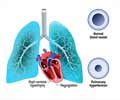Better survival has been noted in the placement of cardioverter-defibrillators in patients with less severe level of heart failure than patients with no ICD, a new study has reported

Sana M. Al-Khatib, M.D., MH.S., of the Duke University Medical Center, Durham, N.C., and colleagues compared survival in Medicare beneficiaries in the National Cardiovascular Data Registry ICD registry with an LVEF between 30 percent and 35 percent who received an ICD during a heart failure hospitalization with similar patients in the Get With The Guidelines-Heart Failure database with no ICD. The analysis was repeated in patients with an LVEF less than 30 percent.
There were no significant differences in the baseline characteristics of the matched groups (n = 408 for both groups). At 1 year, 24.5 percent of ICD patients died vs 24.9 percent of non-ICD patients. At 3 years, 51.4 percent of the ICD patients died, compared with 55.0 percent of the non-ICD patients, a significantly lower risk of death among patients with an LVEF between 30 percent and 35 percent who received an ICD. Presence of an ICD also was associated with better survival in patients with an LVEF less than 30 percent (3-year mortality rates: 45.0 percent vs 57.6 percent).
The authors write that although the difference in absolute risk by 3 years was not large (3.6 percent), it was significant and close in magnitude to what was observed in other clinical trials of prophylactic ICDs. "These results support guidelines' recommendations to implant a prophylactic ICD in eligible patients with an LVEF of 35 percent or less."
Source-Eurekalert














